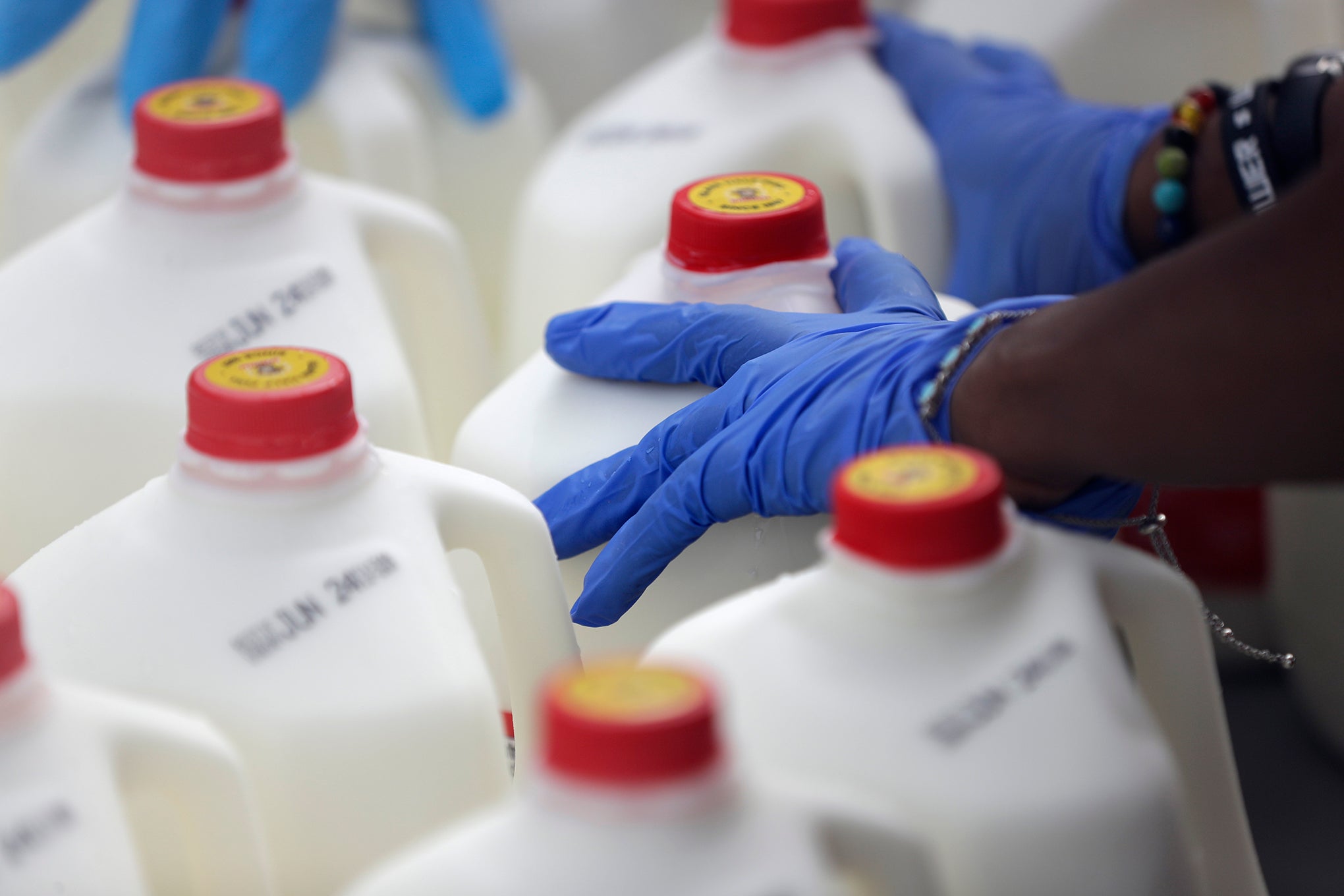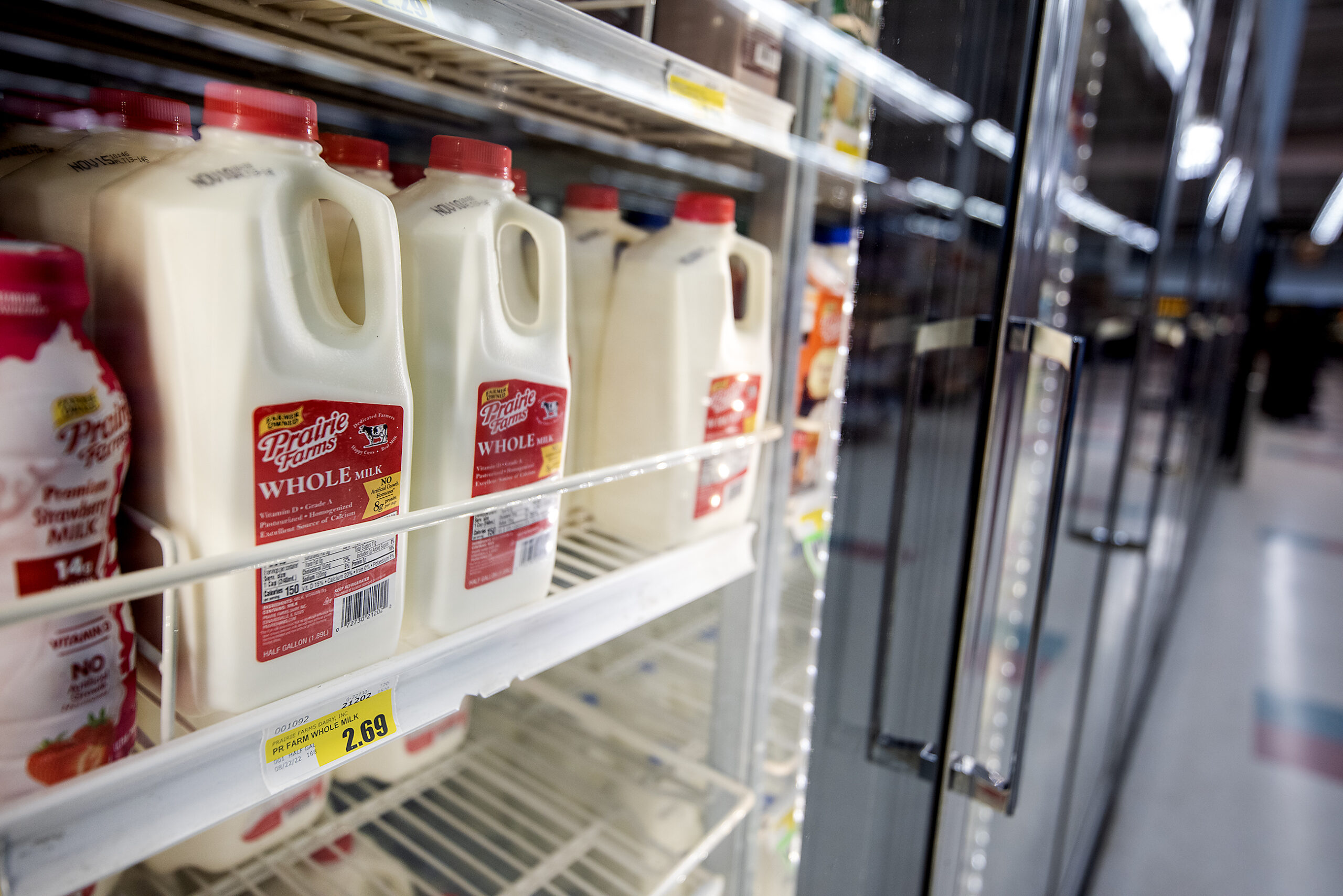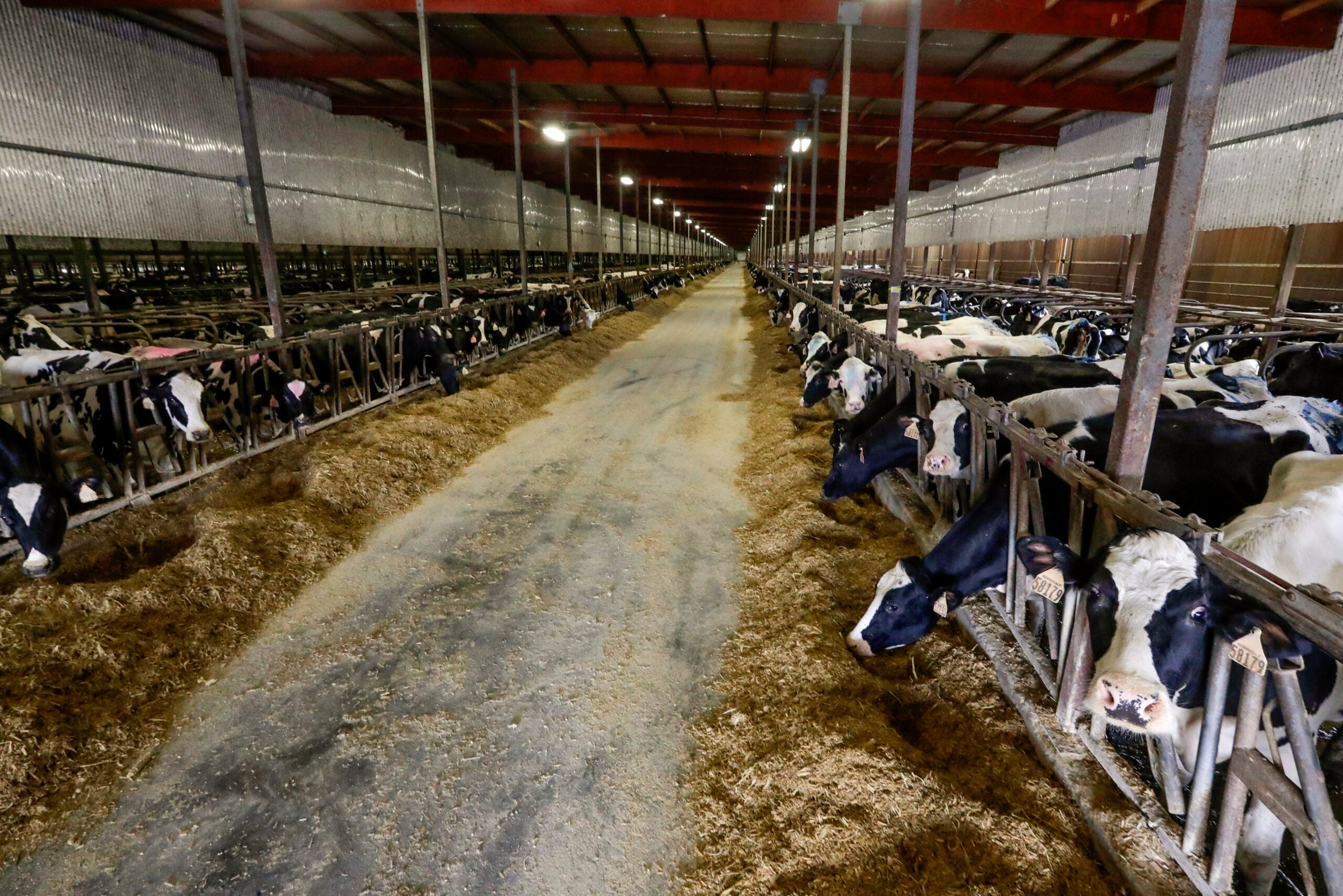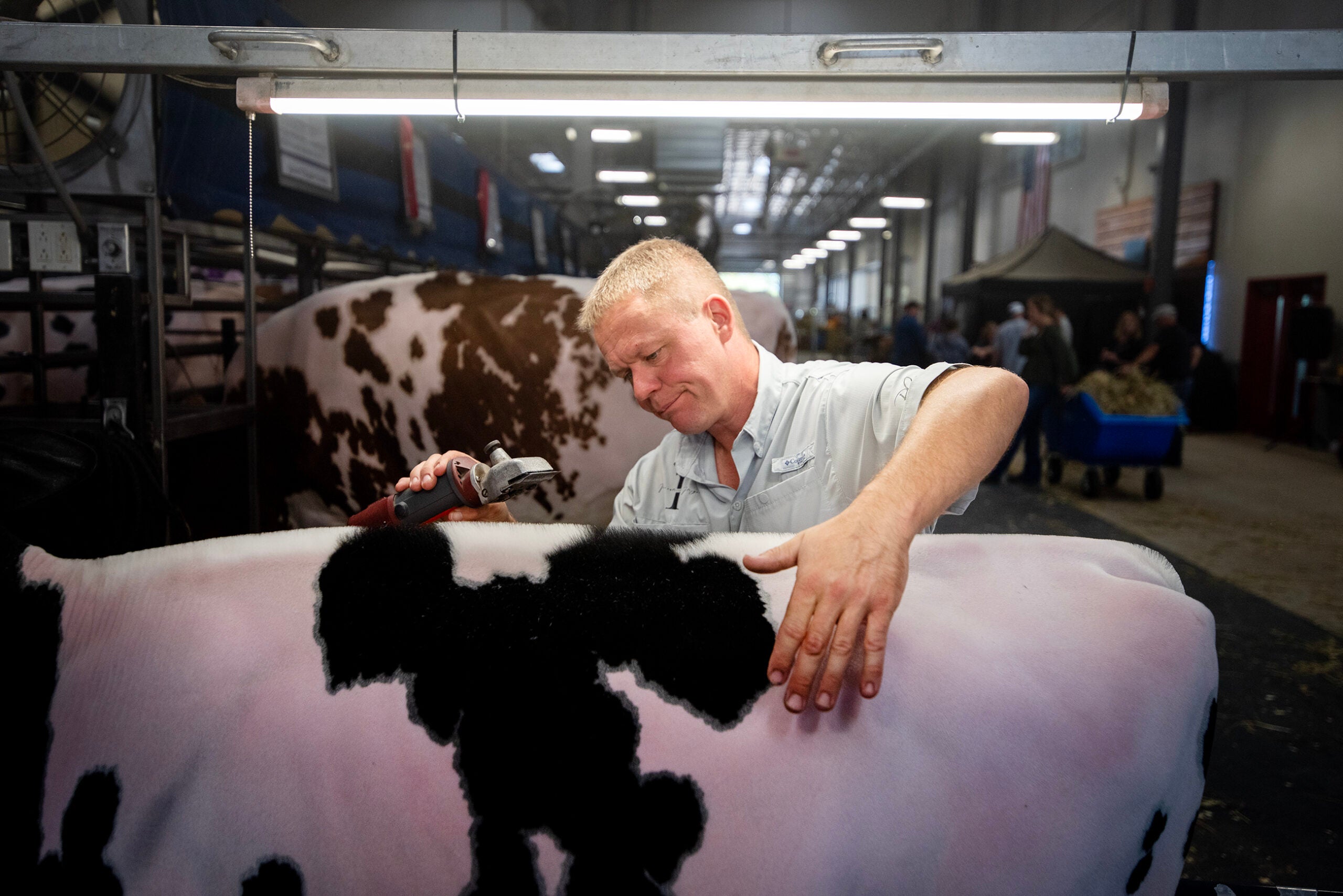Wisconsin dairy farmers have seen a major decline in milk prices and an overabundance of milk on the marketplace this summer. That means at least some producers have also seen their milk go down the drain.
The Milwaukee Journal Sentinel reported last week that truckloads of milk were being dumped through the Milwaukee Metropolitan Sewerage District. A spokesperson told the paper that the amount being disposed of had recently declined to five truckloads per week.
Producers in western Wisconsin were also forced to dump milk in June when a creamery in Minnesota shut down for 30 days and they weren’t able to find another buyer.
News with a little more humanity
WPR’s “Wisconsin Today” newsletter keeps you connected to the state you love without feeling overwhelmed. No paywall. No agenda. No corporate filter.
Chuck Nicholson, agricultural economist at the University of Wisconsin-Madison, said it’s not unusual to see some milk dumping in late spring and early summer.
“We tend to see a peak in the production of milk per cow around this time of year,” he said. “That’s based on biology of the cow and the timing of what the climate looks like to make that milk.”
Nicholson said the milk processing system is built to try to absorb the seasonal production increase, referred to as the “spring flush.” But he said this year’s increase is much larger than usual because farmers have been working to increase production.
“We had some really tremendous milk prices last year that gave dairy farmers a message, ‘Hey, we need more milk in the marketplace,’” he said. “Producers are pretty good at responding to those kinds of incentives. So now we’re bringing that additional milk online compared to last year. And so that’s part of why we are seeing the issues.”
Nicholson said dairy producers and processors don’t want to see milk go to waste, so dumping is usually a last resort. He said it’s only when a specific plant has run out of capacity and there is no available space at plants within reasonable driving distance.
“It’s a really unfortunate thing when it happens, but everybody’s generally trying pretty hard to make sure that it doesn’t,” he said. “Nobody wants to lose the economic value and also, most farms and companies don’t want to see the story in the newspaper that says my milk was dumped.”
Sarah Sarbacker, communications director for FarmFirst Dairy Cooperative based in Madison, said she believes milk dumping has been going on for months in Wisconsin.
“Although our cooperative has not dumped any milk, it’s really kind of difficult when we’re selling milk at such distressed prices,” Sarbacker said. “If it’s not at distressed prices, then some places don’t have anywhere for it to go and it’s just being dumped.”
She said demand for milk typically slows in the summer when students are out of school. But she said some dairy processing plants have also cut back on production hours because they can’t find enough workers.
“There are a lot of plants who used to be open and running seven days a week, or six days a week, and they’ve had to cut down their days of operation,” she said. “They don’t have the staff to run their plants as much as they used to. So for every day that they’re not open, that’s a whole day of them not taking in loads of milk.”
With an oversupply of milk available, prices have declined significantly. Nicholson said farmers are seeing 30 to 40 percent less than what they received last year, a decline that he said is historically high.
“It’s a fairly typical pattern in the dairy industry that we have these big up and downs, but this down in particular is pretty big,” he said.
Even with the price decline, Nicholson said many farmers don’t want to stop milking cows that are at their peak of production.
Sarbacker said many producers also try to milk more during times of low prices to keep up their profits, even though the overproduction is likely keeping prices down. She said producers are hopeful the market will improve this fall as production evens out and demand for beverage milk increases with kids back in school. But she said it may also take farmers culling cows and purposefully cutting back before prices bounce back.
Wisconsin Public Radio, © Copyright 2026, Board of Regents of the University of Wisconsin System and Wisconsin Educational Communications Board.





